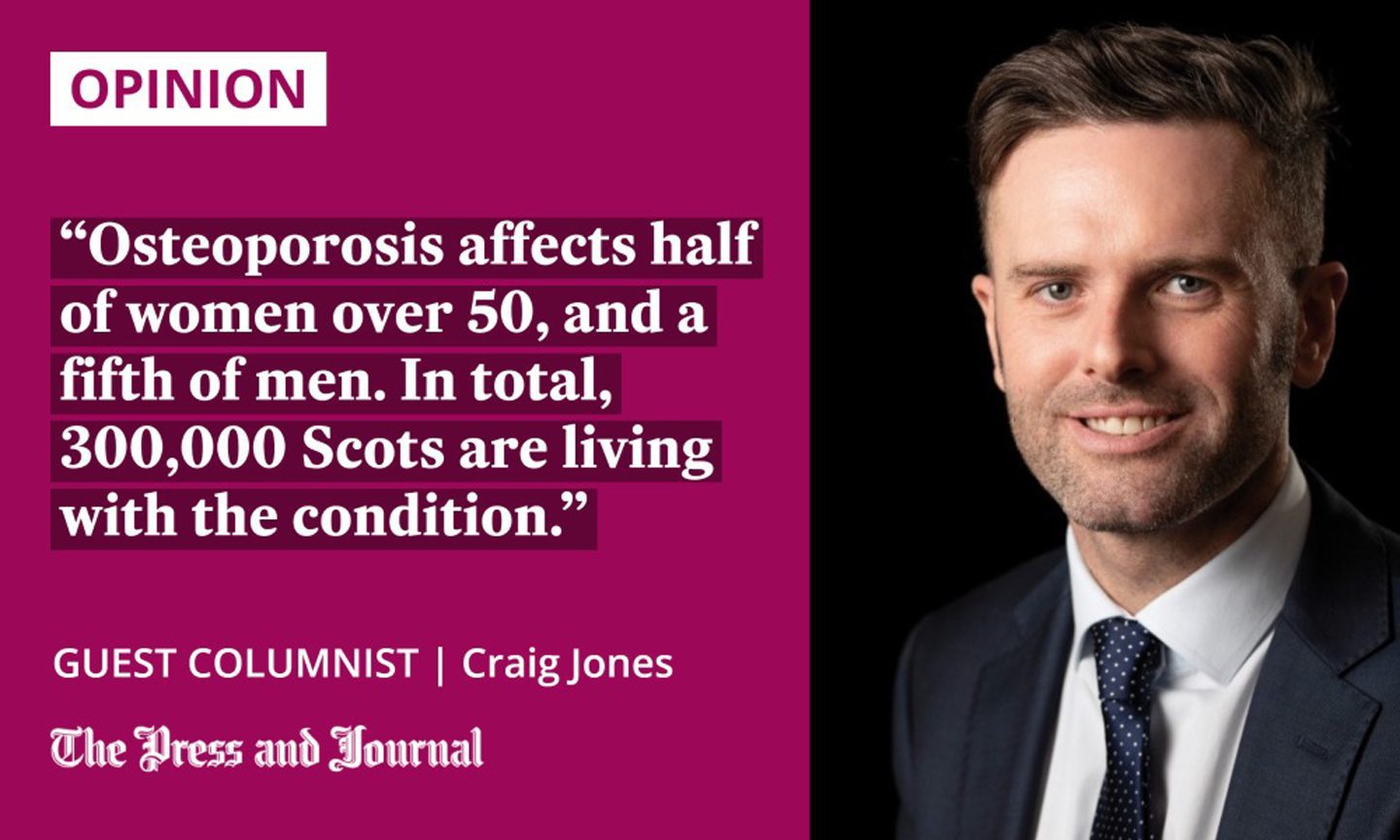Irn-Bru, Scotch whisky, Tunnock’s and Highland Spring: proud Scottish exports, enjoyed by people around the globe.
But there’s a lesser-known Scottish success story that has saved and improved countless lives across the world. And, right now, it’s at threat of being undermined by bureaucratic inertia.
Amongst its many social achievements, Scotland was the birthplace of the Fracture Liaison Service (FLS): the world standard for treating people with osteoporosis. The model was so effective that it’s been put at the centre of healthcare systems in dozens of countries. It speaks directly to the most serious societal challenge of the developed world – namely, how do we ensure that, as our societies age, people’s later years aren’t blighted by pain and disability, overwhelming healthcare systems with unmanageable demand?
Beating osteoporosis is central to this question. Osteoporosis affects half of women over 50, and a fifth of men. In total, 300,000 Scots are living with the condition.
I’m not going to take for granted that everyone knows what this clinical-sounding, hard-to-spell word with origins in Greek means. Osteoporosis silently causes people’s bones to lose strength, so they can break after the simplest injuries, like a cough, a fall from standing height, or even a hug from grandchildren.

These fractures (broken bones) are no minor inconvenience. They’re the fourth most consequential health condition in terms of years lost to premature death and disability.
At the turn of the century, two visionary Glaswegian clinicians resolved that it shouldn’t have to be like this. They knew that, with an early diagnosis, osteoporosis is treatable and fractures preventable.
In 1999, their innovative FLS opened in two Glasgow hospitals. The service quickly built a reputation for outstanding effectiveness in preventing fractures, particularly hip fractures. Very soon, the concept of the FLS began to proliferate across the world.
For millions of people, the tenacity of those Scottish clinicians has meant the difference between quality senior years and disability. Twenty years on, the service continues to transform people’s quality of later life. And the Scottish NHS is rightly proud that so many other countries have adopted the model that launched in Glasgow.
Over 80,000 people have checked their risk, find out yours in just 5 minutes. Click here to check your risk today: https://t.co/nSpJgV1KvV#osteoporosis #riskchecker #health #bonehealth pic.twitter.com/1nK89o4oqC
— Royal Osteoporosis Society (@RoyalOsteoSoc) March 29, 2023
It is, therefore, a bitter irony that, in Scotland of all places, members of the public don’t benefit from publicly available data on how their local FLS is performing. In England, Wales and Northern Ireland, at the click of a mouse, anyone can access a public audit of Fracture Liaison Services’ performance.
The sunlight of transparency enables the public to hold NHS leaders to account in localities where services are performing poorly. Missed opportunities to prevent fractures can be challenged with people power. And, crucially, healthcare professionals can learn from their own performance and from that of their neighbours.
Time for the Scottish Government to put its money where its mouth is
In mid-2022, the National Audit Programme Board of the Scottish Government decided that the Scottish public should benefit from the same transparency as people in the rest of the UK. But, as we approach the anniversary of that move, no official has yet stepped forward to find the modest sum of £150,000 to fund it. There’s been an eerie silence.
If the public audit had been delivered on the day the committee decided it was needed, we’d now be on course to prevent 172 hip fractures in Scotland by mid-2024. That’s 172 Scots saved from a life-changing, heart attack-level medical event.
The £150,000 cost of the audit is just 0.15 of a percent of what the Scottish NHS spends on treating people with hip fractures every year
We’d no longer need 1,600 acute hospital bed days. Most sensitively, we’d be on course to prevent 43 premature deaths. But, since officials have not made any progress, none of these benefits can yet be realised.
The £150,000 cost of the audit is just 0.15 of a percent of what the Scottish NHS spends on treating people with hip fractures every year. As a line item in the NHS budget, it’s a rounding error.
It’s time for the Scottish Government to put its money where its mouth is when it comes to healthy ageing. It would be a tragedy if Scotland – the birthplace of modern fracture prevention – saw its gift to world health tarnished at home because of institutional inertia.
Craig Jones is chief executive of the Royal Osteoporosis Society

Conversation